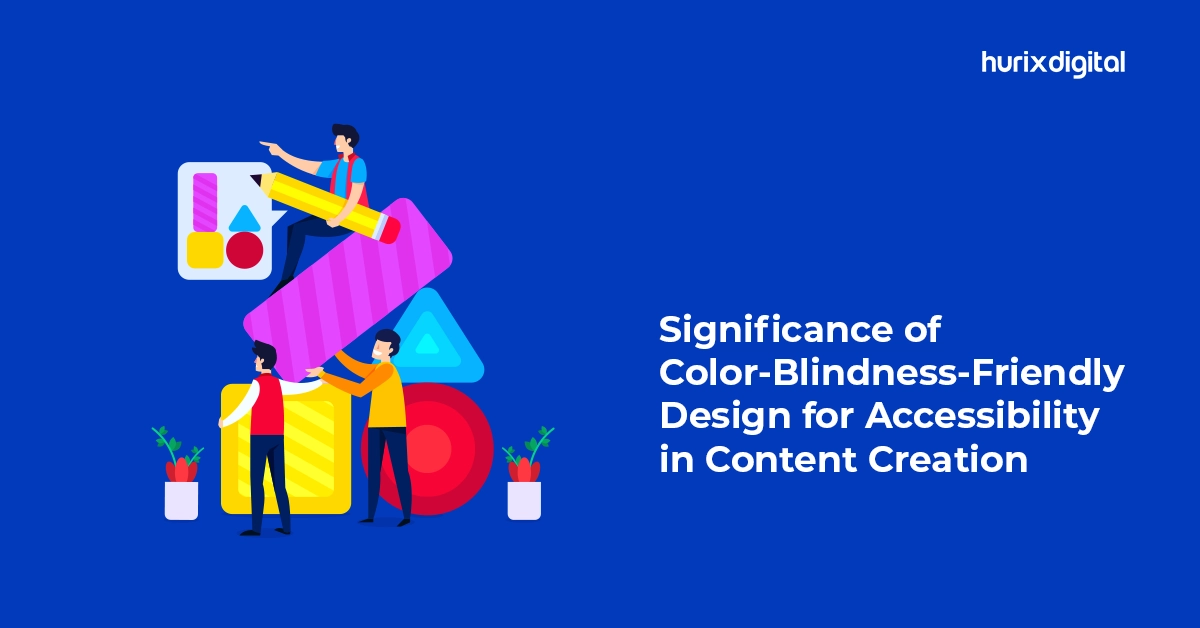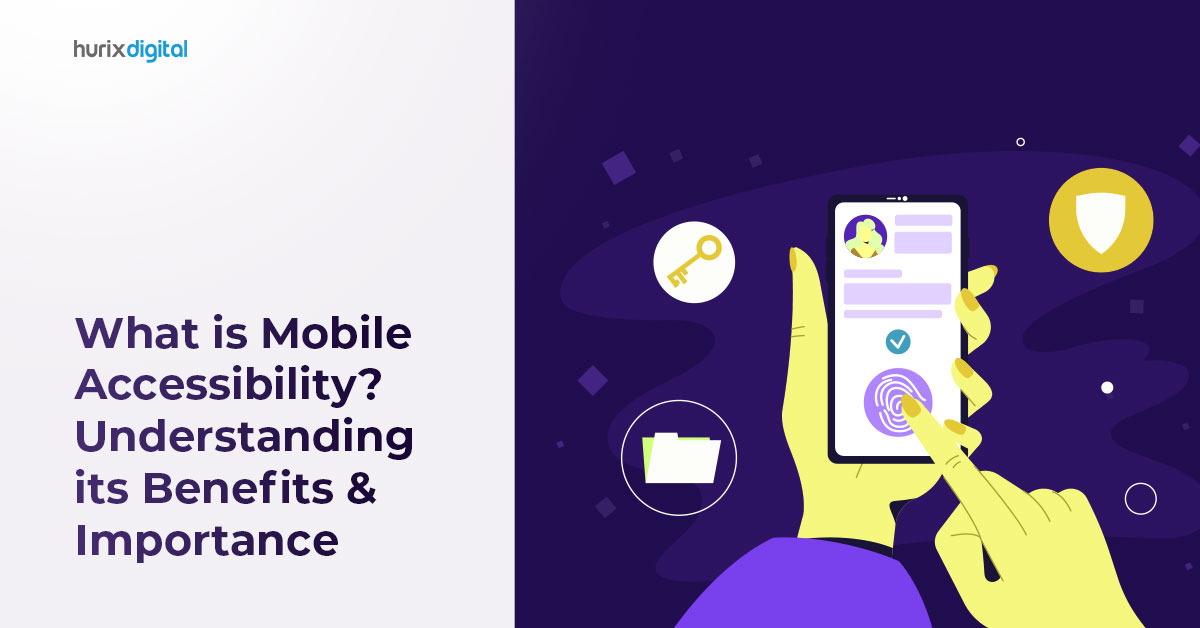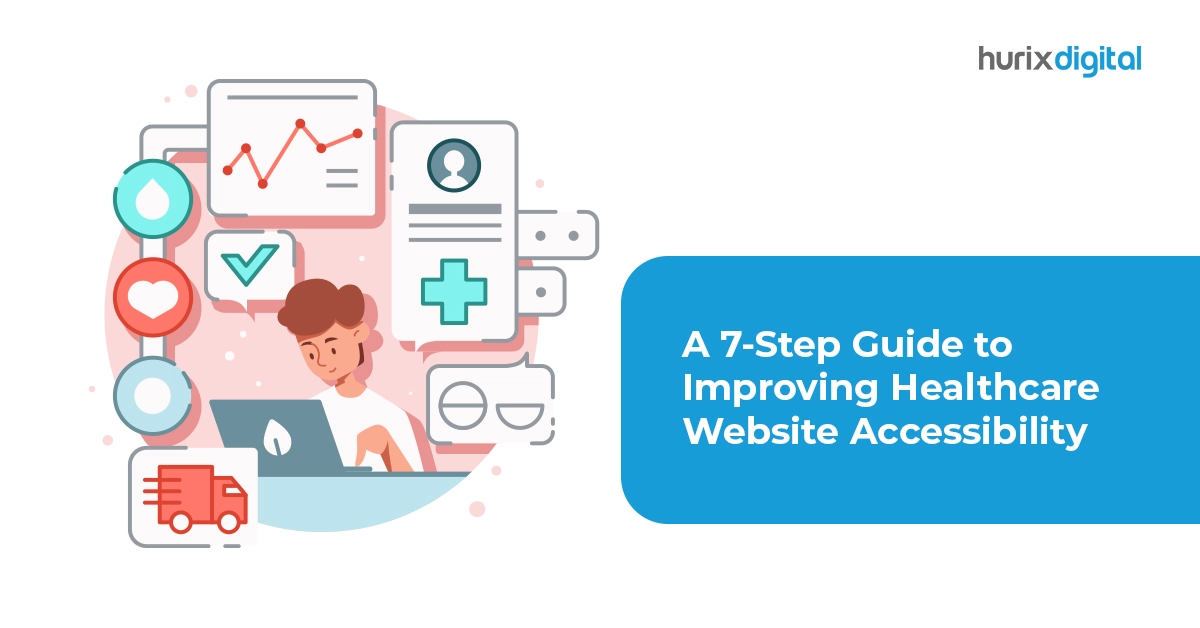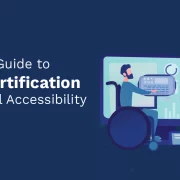
Significance of Color-Blindness-Friendly Design for Accessibility in Content Creation
Summary
This blog explores color blindness, emphasizing accessible web designs. It offers best practices for optimizing websites for color blind users, beyond just color-dependent communication.
Even though color is a powerful tool for creating a brand’s distinctive look, websites that rely heavily on color differentiation to communicate information run the risk of losing a sizable percentage of their user base—those who are color blind.
The design relies heavily on color since it shapes human interactions and evokes emotions. However, for those with color vision deficits, these design decisions might impede their ability to interact with and absorb digital content.
Approximately 300 million people globally grapple with color blindness, facing limitations in perceiving information presented primarily through color cues. This compels us to champion the “universal design“ concept in content creation.
Prioritizing such an approach allows interfaces and information architecture to become inherently inclusive, ensuring a seamless experience for users with diverse visual abilities.
Table of Contents:
- Understanding Color-Blindness
- Accessibility Considerations for Color Blindness-Friendly Design
- Best Practices for Color Blindness-Friendly Design
- The Bottom Line
Understanding Color Blindness
Color blindness, also known as color vision deficiency (CVD), affects how people perceive colors. There are several variations of CVD, each impacting color perception differently. These variations pose challenges in navigating the digital world. Websites that rely solely on color to convey information, like using red for error messages or green for success notifications, can be confusing or invisible to users with CVD.
To ensure inclusivity, designers should prioritize universal design principles. It means creating interfaces and information that are inherently accessible, regardless of a user’s color perception.
Also Read: Inclusive Learning to Address the Diverse Needs in Workforce Development
Accessibility Considerations for Color Blindness-friendly Design
We can cultivate an exemplar of digital accessibility by prioritizing color-blindness-friendly design.
1. Inclusive Design for a Diverse Audience
The contemporary digital sphere demands a heightened awareness of inclusivity. Content creators must adopt an inclusive content design that exceeds the limitations of color blindness, a prevalent condition impacting a substantial demographic.
Content that is inaccessible to people with color vision impairments dilutes its potential impact and limits the creator’s ability to connect with a larger audience.
From an accessibility standpoint, adherence to established web accessibility guidelines, like the Web Content Accessibility Guidelines (WCAG), is paramount. These WCAG principles, especially those addressing the “Use of Color Alone” and “Minimum Color Contrast,” act as a compass for creators.
Adherence to these guidelines ensures unhindered legibility for users with color vision deficiency, while overlooking these WCAG benchmarks erects frustrating hurdles for users with color blindness, transforming a potentially engaging experience into an uphill struggle. Information becomes readily available to all, overcoming limitations in visual perception. This not only reflects a commitment to ethical design practices but also ensures the success and reach of the content itself.
2. Color-Conscious Design for a Seamless User Experience
Integrating accessibility considerations into color design facilitates a universally intuitive user experience. It translates to frictionless navigation, effortless information comprehension, and a highly engaged audience. The benefits, however, extend far beyond users with CVD. Clear visual hierarchies and strategic color usage benefit everyone.
A website plagued by illegible text due to poor color contrast frustrates users with CVD, as well as anyone seeking a smooth and efficient online experience. For instance, a user encounters a webpage with black text on a dark blue background or one overloaded with distracting colors and patterns. Such a visual assault disrupts the user’s journey, hindering their ability to locate the information they seek.
Have you ever abandoned a website due to such frustrations? Most likely.
This highlights how color accessibility is not just about catering to a specific group. It centers on creating a harmonious digital environment that boosts user satisfaction and minimizes the likelihood of visitors abandoning the platform altogether.
3. WCAG-Compliant Design
A colorblindness-friendly design aligns seamlessly with established web accessibility standards. A design for colorblindness directly adheres to these principles by ensuring information is not conveyed solely through color.
It enables a level playing field, allowing individuals with color vision deficiencies to engage with content effortlessly. Compliance with these guidelines demonstrates ethical content creation while also bearing legal significance. Many regions have regulations mandating accessible web design, making such considerations not only a moral imperative but a legal one.
4. Legal Imperative
While the aesthetic benefits of colorblindness-friendly design are undeniable, content creators must also recognize its growing legal significance.
The digital landscape is subject to accessibility restrictions, as seen by the growing influence of laws such as the Americans with Disabilities Act (ADA) and the European Accessibility Act.
WCAG compliance provides a proactive strategy that reduces the danger of costly lawsuits and settlements. Besides, the colorblind-friendly design enables artists to demonstrate their commitment to ethical content development while assuring compliance with any existing regulatory requirements.
Best Practices for Color Blindness-Friendly Design
Let us explore the best practices to follow to ensure your message reverberates with an extensive audience, enabling an equitable digital experience.
1. Harnessing High Contrast
When crafting charts, opt for color combinations that offer exceptional contrast. It ensures clear differentiation between data points, lines, and sections, eliminating confusion and promoting accessibility.
2. Leveraging Pre-Designed Palettes
Explore and adopt established color palettes specifically designed for colorblind-friendly communication. These palettes address the challenges of diverse visual impairments, ensuring that charts remain informative and accessible.
3. Avoiding Color Reliance
To ensure inclusivity, incorporate complementary communication methods as well. Utilize clear labels, textures, and strategic patterns to bolster clarity. Any alternative signal that reinforces understanding is encouraged. If unsure about visual impairment accessibility, consider a “grayscale test”-view your design in grayscale to reveal areas where color removal hinders comprehension.
- Enriching Communication with Texture and Patterns: Patterns act as supplementary information, enriching the data interpretation process and ensuring charts remain accessible even for those struggling with traditional color coding.
- Clarity Through Labeling: Incorporate clear labels and annotations into your charts. Explicitly label data points, lines, and sections, offering guidance to all users, regardless of their color perception capabilities. Clear labels add context for a comprehensive understanding of the information presented.
4. Adopting Accessibility Standards
Align your chart design with established user accessibility guidelines, such as those outlined in the WCAG. By adhering to these principles, designers contribute to a more equitable online environment where everyone can access and understand information.
- Leveraging Simulation Tools: During the design process, utilize color blindness simulators or accessibility testing tools. These tools emulate how individuals with color vision deficiencies perceive the chart, revealing potential areas of confusion.
5. Optimizing Readability
Every aspect of the presentation, from typeface selection and font size to stylistic choices and spacing, can significantly impact the user experience for visitors with varying abilities. Modifiers like italics, bolding, kerning, and spacing all play a crucial role in enhancing readability while their misuse can create challenges for all users.
- Inclusive Image Overlays: Some visitors find text overlays on images challenging. Whether embedded within the image or displayed live, text often competes with the image for attention.
- Clear Link Identification: In-text hyperlinks can go unnoticed by color-blind users. Design practices that do not indicate linked text, such as relying solely on color changes upon hovering, create accessibility barriers.
Also Read: Best Practices of Web Accessibility for Developers and Designers
The Bottom Line
Color blindness-friendly design is particularly critical given the pervasive and often unintentional reliance on color contrast alone to differentiate meaning. Accessibility in content creation embodies a commitment to diversity and fosters a more inclusive user experience. At Hurix Digital, we excel at accessible design practices, ensuring your content adheres to recognized accessibility standards.
Our unwavering commitment to inclusivity manifests in our dedication to continuous platform improvement. This commitment translates into barrier-free experiences that cater to diverse abilities, bolstering engagement and expanding your reach. Contact us now!

Vice President – Digital Content Transformation. He is PMP, CSM, and CPACC certified and has 20+ years of experience in Project Management, Delivery Management, and managing the Offshore Development Centre (ODC).






